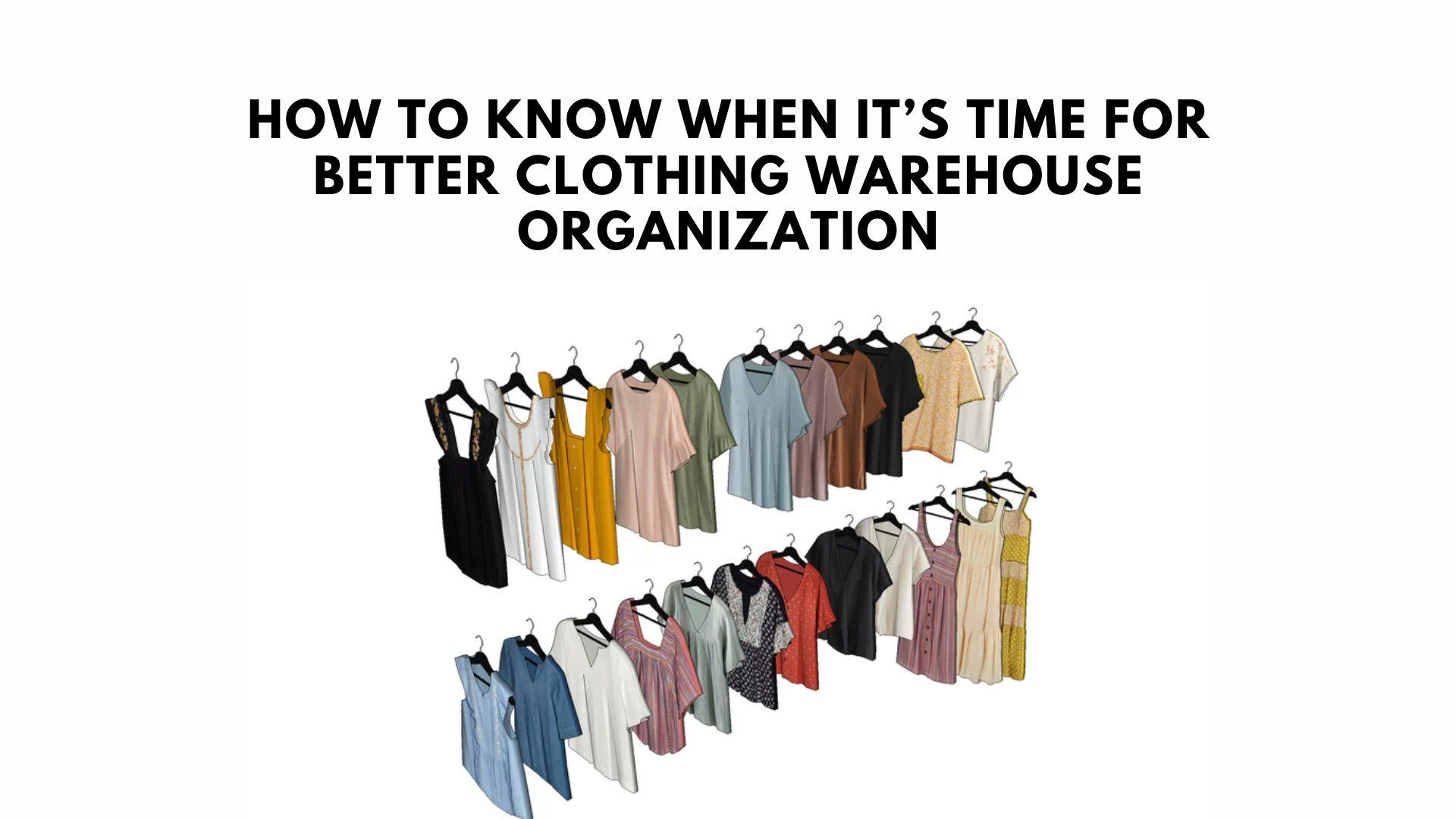In the fast-paced world of fashion and retail, an efficiently organized clothing warehouse is crucial for maintaining productivity, ensuring customer satisfaction, and driving business growth. However, as operations expand and inventory grows, even the best-organized warehouses can start to show signs of disarray. Recognizing when it’s time to improve your warehouse organization can save you time, money, and headaches down the line. Here are some telltale signs that it’s time to rethink your clothing warehouse organization strategy.
1. Frequent Inventory Discrepancies
If you find yourself constantly dealing with inventory mismatches—either overstocked or understocked items—it’s a clear indicator that your current organization system is failing. Regular inventory audits that reveal significant discrepancies suggest that items are not being tracked or stored correctly.
Solution: Implement a robust inventory management system that offers real-time tracking. Organize your warehouse in a way that makes it easy to count and locate items, such as by using clearly labeled bins and shelves.
2. Increased Order Fulfillment Errors
High error rates in order fulfillment can be detrimental to your business. If customers frequently receive incorrect items or orders are delayed because products are hard to find, it’s time to reassess your warehouse layout.
Solution: Designate specific areas for different types of clothing, such as separating men’s, women’s, and children’s apparel. Utilize pick-and-pack methods that streamline the order fulfillment process, ensuring accuracy and efficiency.
3. Decreased Employee Productivity
When your staff spends excessive time locating items or navigating cluttered aisles, it reduces overall productivity. If employees seem frustrated or you notice a decline in their work output, disorganization might be the culprit.
Solution: Optimize your warehouse layout for better workflow. This might involve rearranging shelves, improving signage, or investing in technology like barcode scanners to speed up the process.
4. Overstocked or Underutilized Space
Inefficient use of warehouse space can lead to overcrowding in some areas while leaving others underutilized. This imbalance not only creates chaos but also impacts your ability to manage inventory effectively.
Solution: Conduct a space utilization analysis to determine how your warehouse space is being used. Consider implementing vertical storage solutions or mobile shelving units to maximize space. Regularly review your inventory to ensure stock levels are appropriate for your available space.
5. Poor Accessibility and Safety Concerns
If pathways are blocked with boxes or shelves are overstocked to the point of becoming a safety hazard, it’s a sign that your warehouse needs a reorganization. Accessibility issues can slow down operations and pose risks to your employees.
Solution: Ensure that all aisles and emergency exits are clear of obstructions. Implement a regular cleaning and maintenance schedule to keep the warehouse tidy. Consider ergonomics and safety in your layout design, such as using appropriate shelving heights and providing necessary equipment for safe handling of heavy items.
6. Difficulty in Scaling Operations
As your business grows, your warehouse needs to be able to scale with it. If you’re struggling to accommodate new inventory or find it challenging to expand your operations, it’s a strong indicator that your current organization system is inadequate.
Solution: Plan for scalability by adopting flexible storage solutions and a modular warehouse layout. Invest in warehouse management software that can grow with your business and support more complex inventory tracking needs.
7. Customer Complaints About Delivery Times
In the age of fast fashion, timely delivery is crucial. If you’re receiving frequent complaints about delayed deliveries, it could be due to inefficiencies in your warehouse processes.
Solution: Streamline your order processing workflow. This could involve redesigning your warehouse layout for faster picking, implementing automated sorting systems, or optimizing your shipping processes.
Conclusion
Recognizing these signs and proactively addressing them can significantly improve the efficiency and productivity of your clothing warehouse. By implementing better organization strategies, you’ll not only enhance your operational efficiency but also boost employee morale and customer satisfaction. In the competitive fashion industry, staying ahead with a well-organized warehouse can be a key differentiator for your business.
Investing time and resources into better warehouse organization will pay off in the long run, leading to smoother operations, happier customers, and a more successful business overall.









